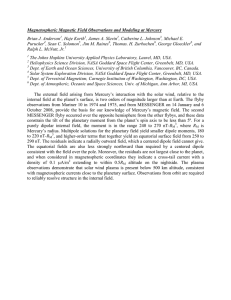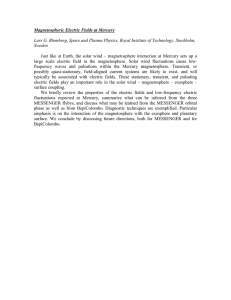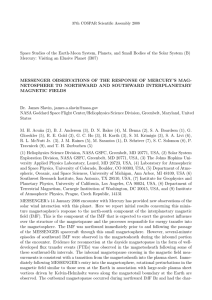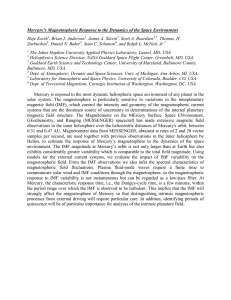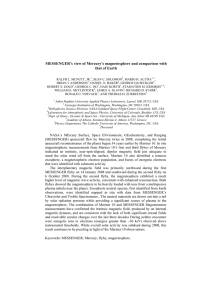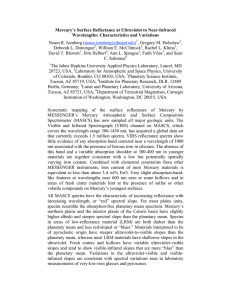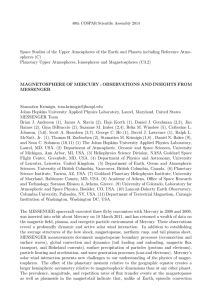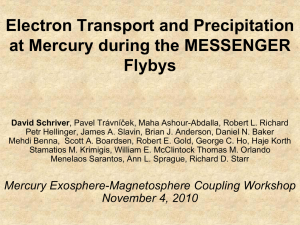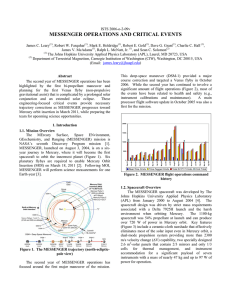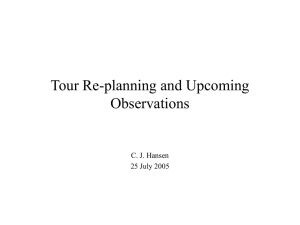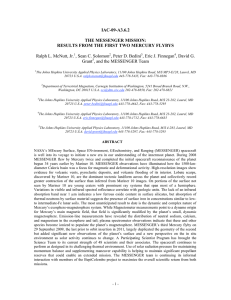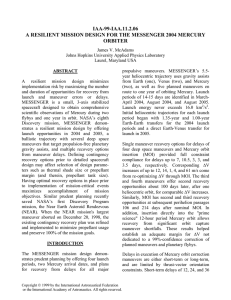Electron Transport and Precipitation at Mercury During the MESSENGER Flybys
advertisement
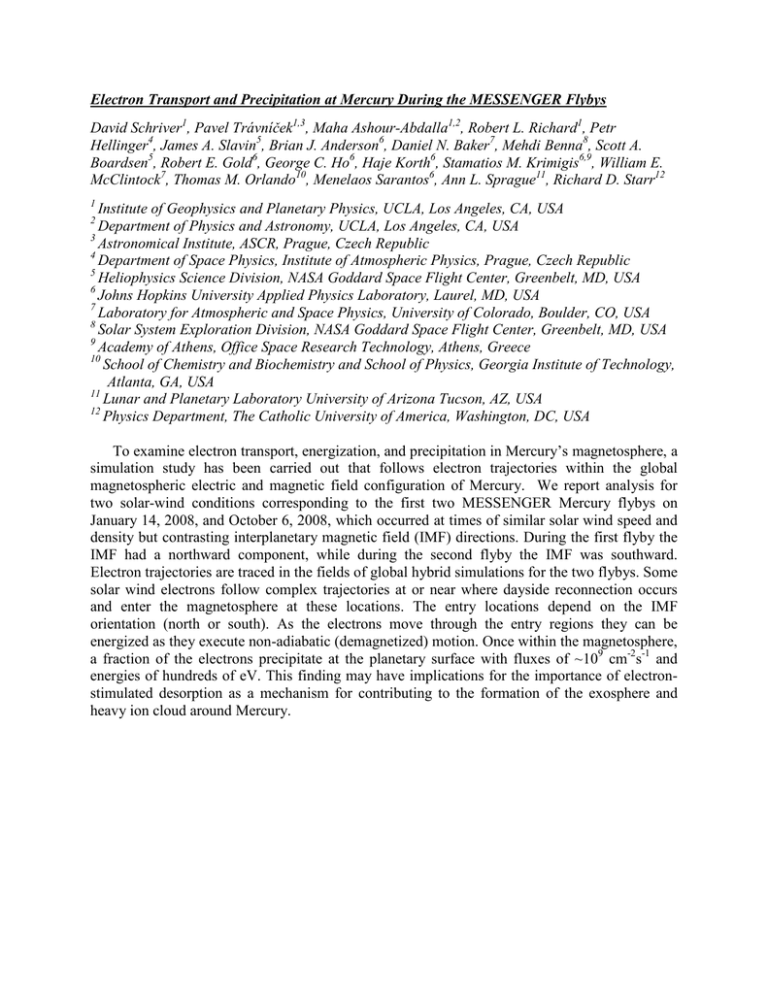
Electron Transport and Precipitation at Mercury During the MESSENGER Flybys David Schriver1, Pavel Trávníček1,3, Maha Ashour-Abdalla1,2, Robert L. Richard1, Petr Hellinger4, James A. Slavin5, Brian J. Anderson6, Daniel N. Baker7, Mehdi Benna8, Scott A. Boardsen5, Robert E. Gold6, George C. Ho6, Haje Korth6, Stamatios M. Krimigis6,9, William E. McClintock7, Thomas M. Orlando10, Menelaos Sarantos6, Ann L. Sprague11, Richard D. Starr12 1 Institute of Geophysics and Planetary Physics, UCLA, Los Angeles, CA, USA Department of Physics and Astronomy, UCLA, Los Angeles, CA, USA 3 Astronomical Institute, ASCR, Prague, Czech Republic 4 Department of Space Physics, Institute of Atmospheric Physics, Prague, Czech Republic 5 Heliophysics Science Division, NASA Goddard Space Flight Center, Greenbelt, MD, USA 6 Johns Hopkins University Applied Physics Laboratory, Laurel, MD, USA 7 Laboratory for Atmospheric and Space Physics, University of Colorado, Boulder, CO, USA 8 Solar System Exploration Division, NASA Goddard Space Flight Center, Greenbelt, MD, USA 9 Academy of Athens, Office Space Research Technology, Athens, Greece 10 School of Chemistry and Biochemistry and School of Physics, Georgia Institute of Technology, Atlanta, GA, USA 11 Lunar and Planetary Laboratory University of Arizona Tucson, AZ, USA 12 Physics Department, The Catholic University of America, Washington, DC, USA 2 To examine electron transport, energization, and precipitation in Mercury’s magnetosphere, a simulation study has been carried out that follows electron trajectories within the global magnetospheric electric and magnetic field configuration of Mercury. We report analysis for two solar-wind conditions corresponding to the first two MESSENGER Mercury flybys on January 14, 2008, and October 6, 2008, which occurred at times of similar solar wind speed and density but contrasting interplanetary magnetic field (IMF) directions. During the first flyby the IMF had a northward component, while during the second flyby the IMF was southward. Electron trajectories are traced in the fields of global hybrid simulations for the two flybys. Some solar wind electrons follow complex trajectories at or near where dayside reconnection occurs and enter the magnetosphere at these locations. The entry locations depend on the IMF orientation (north or south). As the electrons move through the entry regions they can be energized as they execute non-adiabatic (demagnetized) motion. Once within the magnetosphere, a fraction of the electrons precipitate at the planetary surface with fluxes of ~109 cm-2s-1 and energies of hundreds of eV. This finding may have implications for the importance of electronstimulated desorption as a mechanism for contributing to the formation of the exosphere and heavy ion cloud around Mercury.
